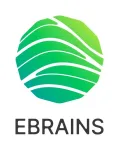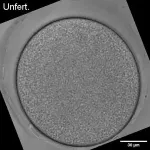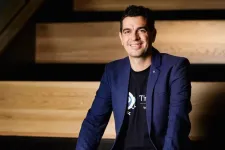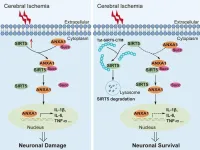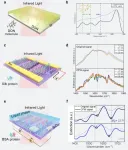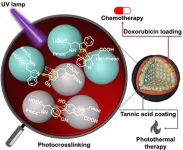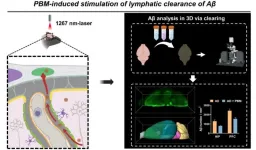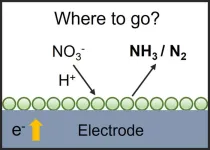(Press-News.org) The European Commission has accepted the EBRAINS 2.0 proposal submitted in response to the INFRASERV call, granting €38 million for the further development of services of the EBRAINS research infrastructure.
The European Commission has signed a grant agreement to fund EBRAINS with €38 million until 2026. Over the next three years, the infrastructure will continue to develop tools and services to widely serve research communities in neurosciences, brain medicine, and brain-inspired technologies.
EBRAINS (European Brain Research Infrastructures) is an EU co-funded collaborative research platform designed to advance neuroscience and brain health. Developed as a legacy of the Human Brain Project, EBRAINS is a digital ecosystem where researchers, clinicians, and experts converge to explore the complexity of the brain at various scales and to derive therefrom new solutions for brain medicine and technology.
The new project will further the development and provision of the infrastructure’s research technologies to the scientific community. It aims to establish a new standard for brain atlases, gather and connect multimodal neuroscientific and clinical data, and push forward the development of digital twin approaches.
The project involves 59 partner institutions from 16 European countries. It was selected for funding after evaluation by independent experts. It is coordinated by the EBRAINS AISBL, a non-profit organisation founded in Brussels during the Human Brain Project, and starts in January 2024.
"The grant agreement marks an important milestone for the EBRAINS research infrastructure,” says Katrin Amunts, who became Joint Chief Executive Officer of the EBRAINS AISBL in September 2023 and led the writing of the successful EBRAINS 2.0 proposal. “We look forward to further developing our tools and services, to share them with our colleagues and empower the community to make progress in neuroscience.”
“We are delighted to have been awarded the SERV grant,” says Philippe Vernier, Joint Chief Executive Officer of EBRAINS. “It is a recognition of the sustainable scientific value of the research infrastructure."
About EBRAINS
The EBRAINS research infrastructure, a key outcome and legacy of the EU-funded Human Brain Project (HBP), was officially launched in 2019. Two years later, in 2021, EBRAINS was included in the Roadmap of the European Strategy Forum on Research Infrastructures (ESFRI). In this next phase, after the recent conclusion of the HBP, EBRAINS will complete the transition into a sustainable infrastructure.
EBRAINS is an open research infrastructure that gathers high-quality research data, tools and computing facilities for brain-related research, built with interoperability at the core. The infrastructure offers an extensive range of brain data sets, a multilevel brain atlas, modelling and simulation tools, and access to high-performance computing resources and robotics and neuromorphic platforms to researchers. Explore the tools and services available at https://www.ebrains.eu/.
EBRAINS AISBL is an international non-profit association, headquartered in Brussels, Belgium. The Research Infrastructure is organised around a central hub that coordinates a pan-European network of services delivered through currently 11 National Nodes: Belgium, Denmark, France, Germany, Greece, Italy, Netherlands, Norway, Spain, Sweden, Switzerland.
EBRAINS 2.0
The EBRAINS 2.0 project aims to establish a new standard for brain atlases, connect foundational multilevel data, and push forward digital twin approaches through modelling and simulation. With a focus on creating tools, models, and workflows, EBRAINS facilitates research on brain organisation, disease mechanisms, and biomarkers. It supports the development of computational disease models, fostering collaboration, and promoting diversity and inclusion in neuroscience. The overarching goal is to deepen the understanding of brain structure and function, leading to advancements in brain medicine, technology, and computing.
END
EBRAINS research infrastructure secures €38 million in funding for new phase of digital neuroscience
2024-01-09
ELSE PRESS RELEASES FROM THIS DATE:
Train your brain to overcome tinnitus
2024-01-09
An international research team has shown that the debilitating impact of tinnitus can be effectively reduced in just weeks by a training course and sound therapy delivered via a smartphone app.
The team from Australian, New Zealand, French and Belgian universities report these findings today in Frontiers in Audiology and Otology.
It offers some hope for millions affected by tinnitus who:
have been told that there is nothing they can do about it
face long queues waiting for treatment, or
can’t afford the costs of specialist support.
The initial trial worked with 30 sufferers, of whom almost two thirds experienced a ‘clinically ...
A chemical reaction key to various industries just got greener
2024-01-09
Osaka, Japan – From alleviating your allergy symptoms to optimizing herbicide performance, alkylamines are molecules that have many uses. Unfortunately, common methods of producing alkylamines result in harmful waste byproducts. A method of synthesizing alkylamines in a sustainable yet cost-effective way has thus been highly sought after.
Now, in a study recently published in Green Chemistry, a research team led by Osaka University has found a way. The team has developed a method of alkylamine synthesis that works under mild conditions and produces ...
Spanish butterflies better at regulating their body temperature than their British cousins
2024-01-09
Butterfly populations in Catalonia in northern Spain are better than their UK counterparts at regulating their body temperature by basking in the sunshine, but rising global temperatures due to climate change may put Spanish butterflies at greater risk of extinction.
An international study, led by the University of Cambridge and the Institut de Biologia Evolutiva (IBE) in Barcelona, found that butterflies use different methods to regulate their body temperature. In Catalonia, butterflies tend to angle ...
A novel cell-penetrating peptide exerts therapeutic effects against ischemic stroke
2024-01-09
This study is led by Dr. Xing Li and Dr. Yilin Zhao (Department of Anesthesiology, Hubei Key Laboratory of Geriatric Anesthesia and Perioperative Brain Health, and Wuhan Clinical Research Center for Geriatric Anesthesia, Tongji Hospital, Tongji Medical College, Huazhong University of Science and Technology). The team's previous research found that the increase in SIRT5 in microglia induced by ischemic stroke causes annexin-A1 (ANXA1) desuccinylation, which decreases ANXA1 membrane recruitment and secretion but promotes ANXA1 nuclear translocation, resulting in the production of proinflammatory ...
Ultrasensitive molecular sensing with synthesize complex-frequencey waves
2024-01-09
Sensors are essential tools for detecting and analyzing trace molecules in a variety of fields, including environmental monitoring, food safety, and public health. However, developing sensors with high enough sensitivity to detect these tiny amounts of molecules remains a challenge.
One promising approach is surface-enhanced infrared absorption (SEIRA), which uses plasmonic nanostructures to amplify the infrared signals of molecules adsorbed on their surface. Graphene is a particularly promising material for SEIRA because of its high ...
Creating novel amino acid nanoparticles with enhanced anticancer activity
2024-01-09
Ishikawa, Japan -- Amino acids, such as tyrosine and tryptophan, are the fundamental building blocks that make up proteins. These biomolecules have different chemical groups on each end and side chain, and so, have the natural ability to form a chain through the formation of an amide (peptide) bond. However, such linkages are weak and easily degraded under physiological conditions. This is where the Fmoc-protected amino acids come into the picture.
In a new study now, a research team led by Dr. Eijiro Miyako, Associate ...
A landscape-based approach to urban heritage management: People, spatial biography, and ecosystem
2024-01-09
This article first identifies the current definition of urban heritage that includes both “old” and “young” monuments. Their protection has also shifted from solely preserving “old” values into a more holistic process to retain “old” values and manage the change in their adaptive reuse to gain “new” values, towards a more people-centered and landscape-based approach. Furthermore, a concept of ecosystem for urban planning and development is introduced, ...
Photostimulation: non-invasive and effective therapeutic approach for Alzheimer’s disease
2024-01-09
Alzheimer’s disease (AD) is an age-related neurodegenerative disorder. β-amyloid (Aβ) deposition in the brain is a crucial contributor to the pathogenesis of AD, mitigating excessive cerebral Aβ burden has been considered as a possible therapeutic strategy for AD. Meningeal lymphatic vessels (MLVs) are recently discovered structures responsible for exchanging soluble components between the cerebrospinal fluid and interstitial fluid, and have been proved to be a potential pathway of Aβ drainage.
Researchers at Huazhong University ...
Love scrambles the brain and scientists can now tell us why
2024-01-09
Love is blind, the saying goes, and thanks to a world-first Australian study, we are now a step closer to understanding why.
It is well known that romantic love changes the brain, releasing the so-called love hormone oxytocin, responsible for the euphoria we feel when falling in love.
Now, researchers from the ANU, University of Canberra and University of South Australia have measured how a part of the brain is responsible for putting our loved one on a pedestal in that first flush of romance.
In the world’s first study investigating the link between the human brain’s behavioural activation ...
Where to go with nitrate electroreduction reaction?
2024-01-09
Ammonia is a necessary feedstock to produce nitrogen-based fertilizers, chemicals, pharmaceuticals, and polymers. To date, about 80% of global ammonia is used to produce nitrogen-based fertilizers which relates to 50% of global food production. The global production of ammonia is about 180 million metric tons per year through the carbon-intensive and highly energy-consuming Haber-Bosch process. The high energy consumption, high carbon intensity, and high capital investment of the Haber-Bosch process make the development of environmentally sustainable and affordable routes for ammonia synthesis under ambient conditions more urgent. The electrochemical ammonia ...
